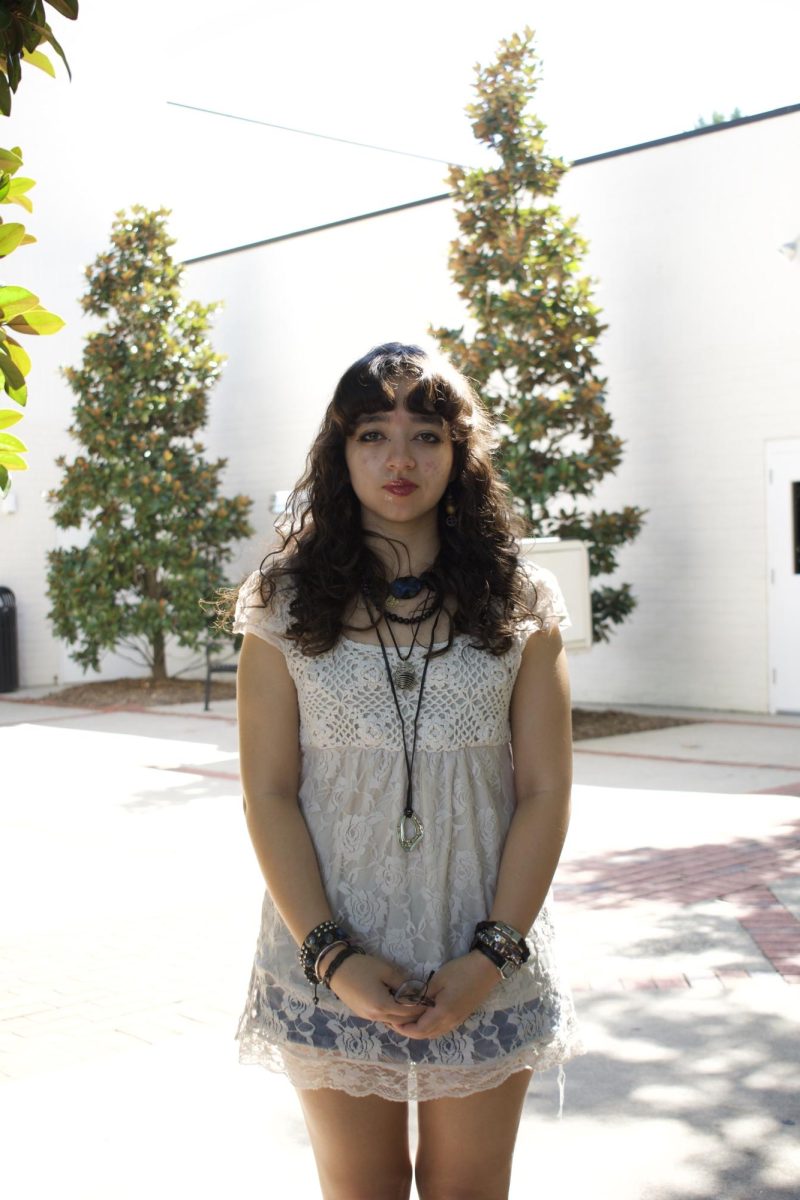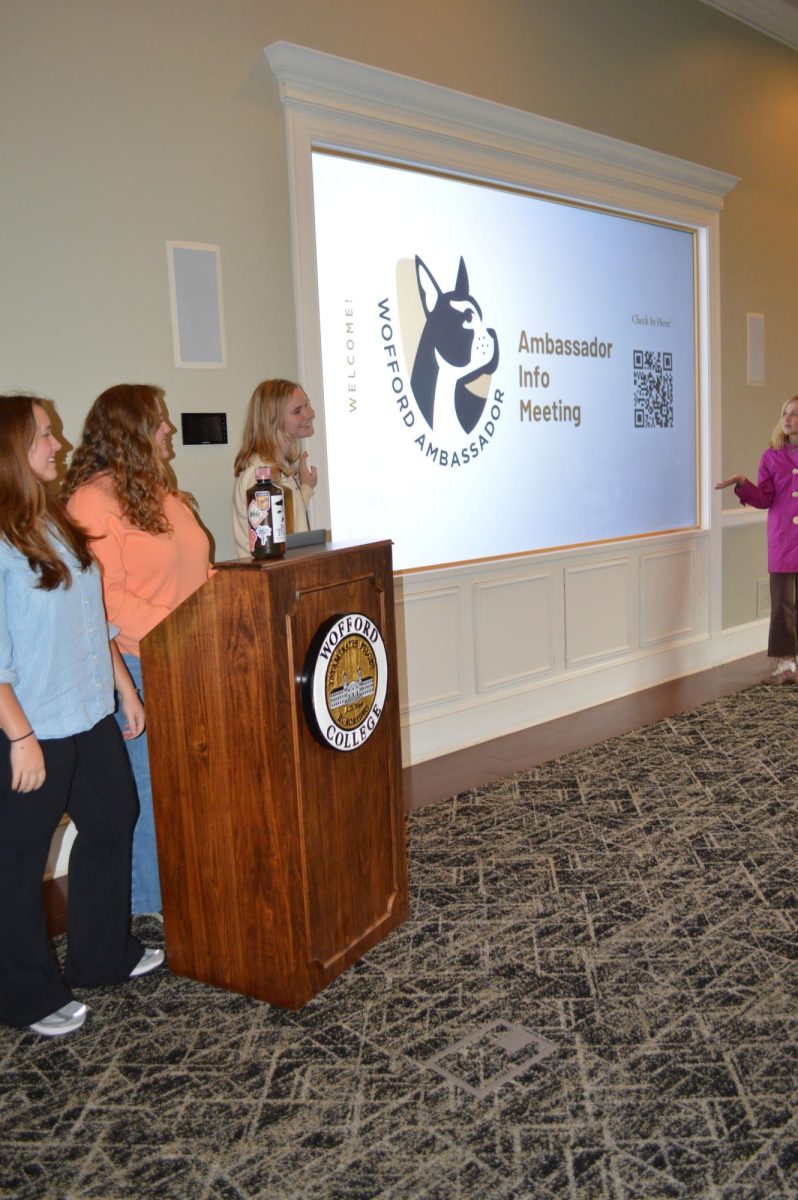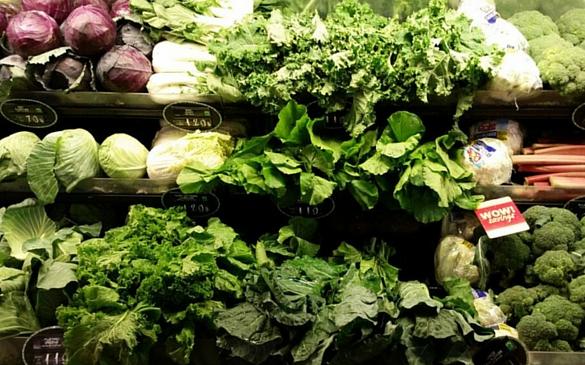By: Savanny Savath, Staff writer
The produce section of the local grocery store is teeming with greens like lettuce, spinach, cabbage and green beans. There are also fruits nearby. They add various colors to the green spectrum such as red and green apples, oranges and yellow and green bananas. All of these foods and colors can be and are included in a vegetarian and vegan diet.
“I think leafy greens in general kind of went vooming because the big thing came out that the darker the fruit or vegetable, the more nutrients. That is definitely true, so anything like spinach, kale and bok choy are going to have more nutrients than something like iceberg lettuce. So those big, vibrant colors– foods are in different colors because they provide different vitamins and minerals for our body. That’s why they say ‘eat the rainbow’ to make sure you are getting all of the vitamins and minerals,” says Kelley Magowan, a southeast regional dietitian for Aramark.
Magowan visited Wofford on Oct. 15. She set up an informational booth on vegetarian and vegan eating in Burwell. The booth included a large sign about herself and the program. On the table were packets of information on vegetarian and vegan eating, various prizes for the right answer to a vegetarian and vegan question and different meals and drinks that a vegetarian could eat.
However, the saying “eat your greens” often overshadows Magowan’s reminder of “eat the rainbow.” Vegetarianism is also often mistaken for veganism.
“A myth is that the only things vegetarians eat are greens like salads, that they can only eat salads or bread. There is so much more than salads. You can eat tofu. You can eat beans. You can eat pasta. Everyone just jumps to salads. But I say, ‘No, I don’t just eat salads,’” says senior Sapana Patel.
“Vegetarians can consume protein from a variety of foods, such as beans, lentils, tofu, quinoa and my personal favorite, peanuts,” says senior Krishna Patel.
A vegan diet excludes any animal products or by-products along with meat. Some animal products are eggs and milk. Vegetarianism also consists of different levels. For example, pollotarians eat only chicken while pescatarians eat only fish and seafood.
Because Sapana Patel rarely eats chicken and shrimp, she identifies as a vegetarian. Along with Krishna Patel, she was raised as a vegetarian but has decided on her own to continue vegetarian eating. They find a vegetarian diet to be difficult at times.
“Growing up in an Indian household, I was able to enjoy many outstanding home-cooked meals. However, at Wofford, I have had a difficult time finding food that is nutritious and savory as I try to eat healthy meals on a daily basis,” says Krishna Patel.
“Sometimes when you go out to eat with a friend and you’re trying to avoid eating meat or chicken, it’s hard to find vegetarian options, if there are vegetarian options. It is limited to salads, wraps or soup. It’s not fulfilling. Sometimes all you can eat are French fries. At fast food restaurants, if the French fries are fried with other meats— I don’t like eating those,” says Sapana Patel.
“It was inconvenient for me to always find something enough to eat without running to carbs or sweets. I didn’t have the option of meat. So now I just do not eat red meat,” says senior Savannah Robinson.
Robinson tried veganism about two years ago, and even though she stopped after two months, she likes to go without eating meats every now and then.
Magowan encourages and hopes students include more plant-based foods in their diet.
“Obviously vegetarian diets have a lot of health benefits like lowering the risk of obesity, heart disease, things like that which is great, but I am encouraging [students] to eat more plant-based foods in general whether they want to be vegetarian or not. And for those who are vegetarian or vegan, I want to make sure that they have the right information to go with that diet in a correct way,” says Magowan.
In the end, control the sweets, control the meats.




























